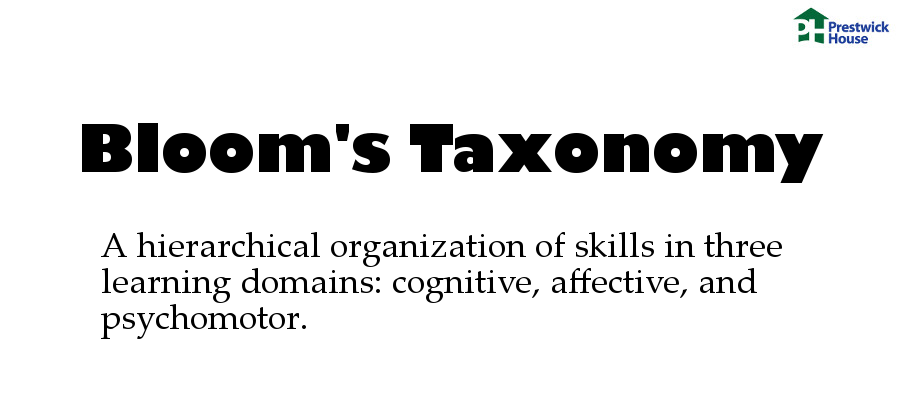Bloom's Original Taxonomy
Bloom's original taxonomy (1956) has three learning "domains": affective, psychomotor, and cognitive.
The affective domain deals with emotional skills: how students react emotionally to stimuli, including what they read and their interactions with other people.
The psychomotor domain encompasses skills people use to manipulate objects and their bodies. Writing with a pencil or pen is a good example of a skill in the psychomotor domain.
The cognitive domain contains the skills that most English/Language Arts educators work on developing in their students:
- Knowledge
- Comprehension
- Application
- Analysis
- Synthesis
- Evaluation
These skills are arranged from "lowest-order" to "highest-order" thought processes.
- Knowledge — Recalling facts, answers, etc. from memory
- Comprehension — Extracting facts, answers, etc. from what's being read
- Application — Using previously gained knowledge to create solutions to novel problems
- Analysis — Breaking down information into smaller components and examining how these components convey meaning
- Synthesis — Combining disparate elements in order to produce a new work; or, using multiple resources to produce a novel understanding of an existing work
- Evaluation — Judging a work or a portion of a work based on a predefined set of criteria
Bloom's Revised Taxonomy
In the 1990s, a group of people with experience in curriculum design, cognitive psychology, academic assessment, and instruction came together to redesign Bloom's taxonomy.
The revised taxonomy, arranged from lowest-order to highest-order skills:
- Remembering
- Understanding
- Applying
- Analyzing
- Evaluating
- Creating
Essentially, the change switches the top two levels, evaluation and synthesis.
Prestwick House offers a teaching guide series that uses a modified version of Bloom's Taxonomy to help you teach specific titles: Levels of Understanding.
